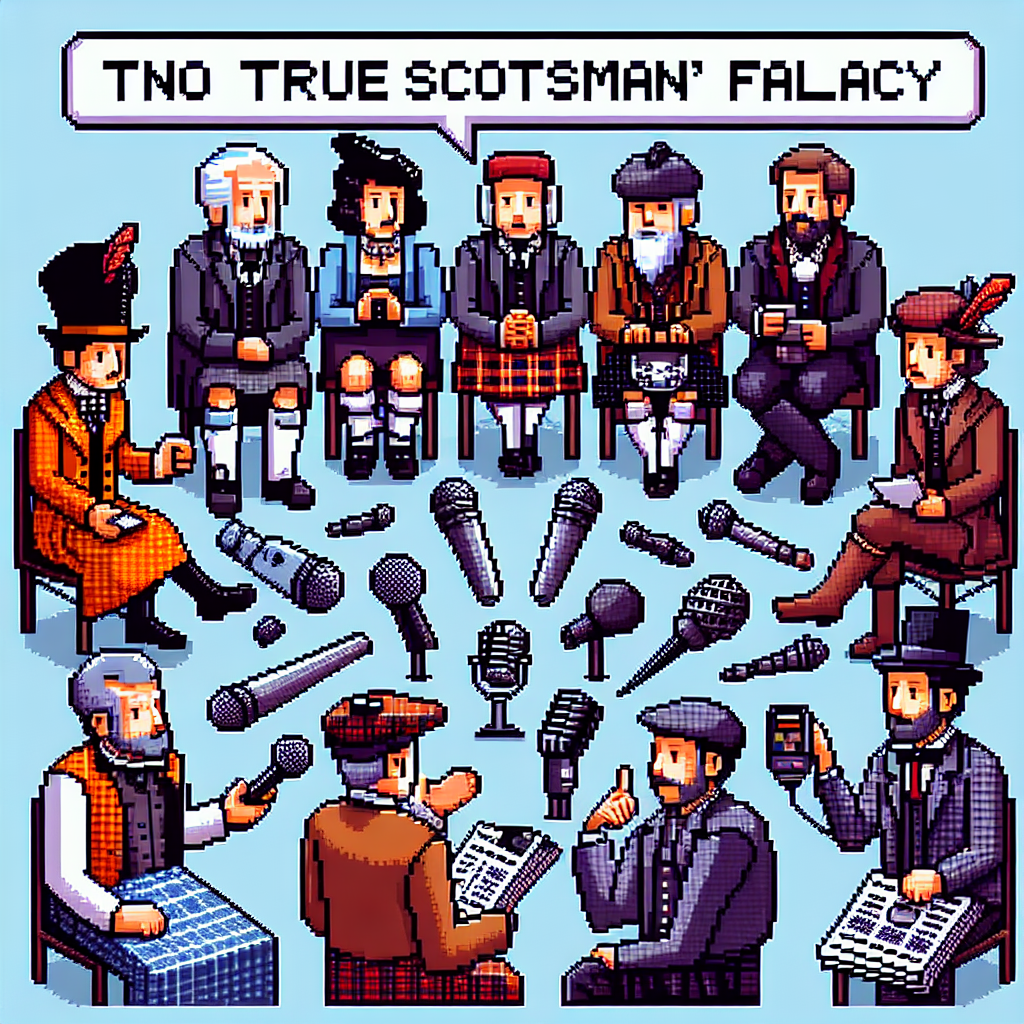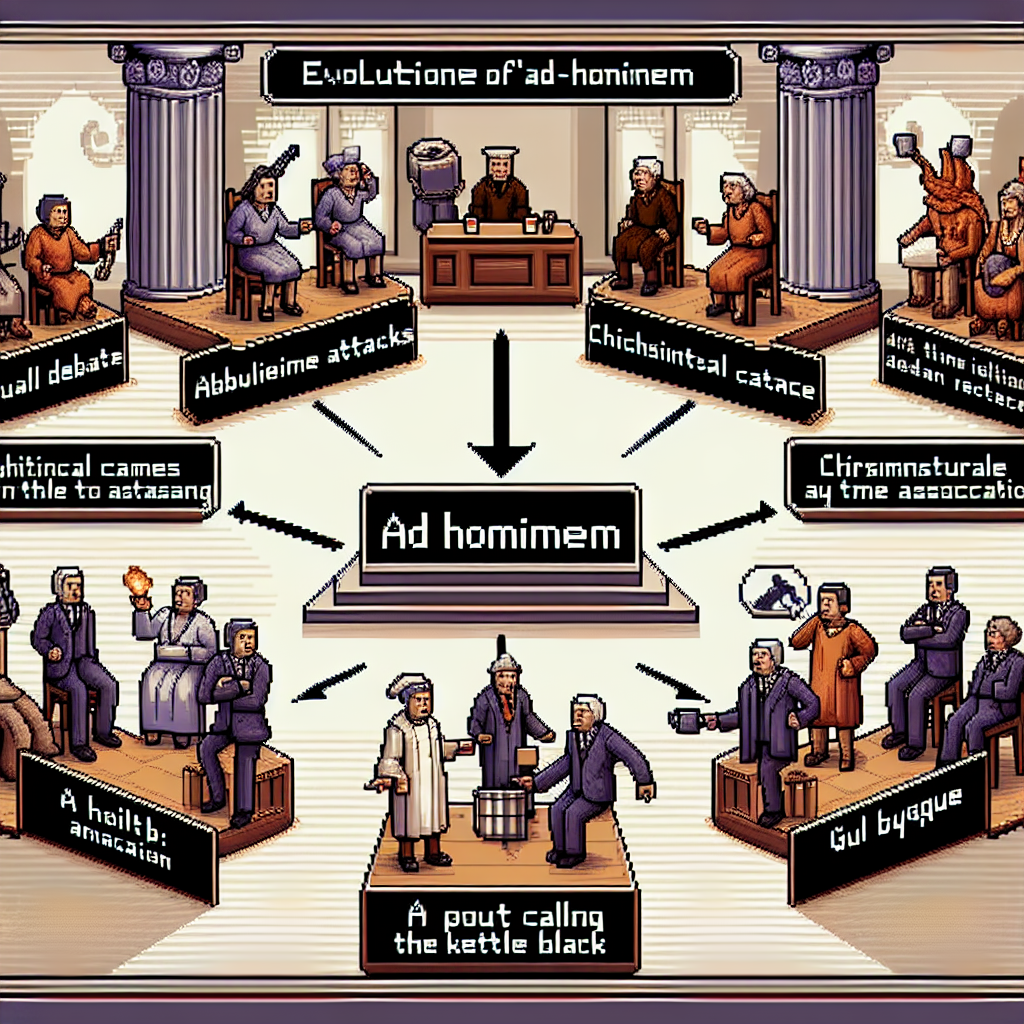No True Scotsman Fallacy: An Introduction
Explanation of the No True Scotsman Fallacy
The No True Scotsman fallacy is a logical misstep that arises when one deflects a counterexample to their claim by asserting that no true member of the group in question would behave or think in such a manner. This fallacy is troublesome because it shifts the goalposts in a debate, making it nearly impossible to challenge the initial assertion. Thus, understanding this fallacy is crucial for maintaining logical consistency.
Importance of Recognizing Logical Fallacies
Recognizing logical fallacies, like the No True Scotsman, is of paramount importance in discussions and debates. In contemporary discourse, distinguishing fallacious reasoning allows for clearer, more productive conversations. Additionally, identifying these errors helps individuals argue more persuasively by avoiding flawed reasoning. Ultimately, by fostering critical thinking, society can engage in meaningful dialogue, especially on complex topics.
Historical Context of the No True Scotsman Fallacy
Origin of the No True Scotsman Term
The No True Scotsman fallacy has intriguing historical roots that trace back to philosophical discussions. It emerged as a term used to illustrate a specific type of logical fallacy, which is employed when one attempts to protect a universal claim by excluding counterexamples. This fallacy was initially coined by philosopher Antony Flew during a debate over ethical statements. Identifying and understanding its origin is significant, because it forms the basis of how we recognize and debate integrity in arguments.
Examples from Historical Debates and Discussions
Throughout history, the No True Scotsman fallacy has frequently surfaced in debates and ideological discourses. For instance, it was evident in religious arguments where adherents would argue what a true believer would do, thus dismissing dissenting behaviors. Despite changes in contextual environments over time, this fallacy endures, illustrating its potent effect during heated discussions. Recognizing its application in historical debates helps individuals critically analyze and navigate complex arguments in contemporary discourse.
Understanding the No True Scotsman Fallacy
Basic Structure and Mechanism
The No True Scotsman fallacy is an informal logical error that occurs when someone attempts to protect their generalization from counterexamples by redefining the terms of the claim. Essentially, this allows the person to dismiss evidence that contradicts their original assertion. This mechanism is often employed during debates when individuals face examples that challenge their statements.
Common Contexts Where It Appears
This fallacy frequently emerges in discussions about identity and belonging because it involves redefining what constitutes a “true” member of a particular group. It can be spotted in numerous debates, whether they are about religion, nationality, or other social categories. Additionally, the No True Scotsman can surface in arguments where a person desperately wishes to maintain their position despite credible opposing evidence. Recognizing this fallacy is vital for engaging in constructive conversations and avoiding flawed reasoning.
No True Scotsman: Implications in Modern Discourse
Political and Social Debates
The No True Scotsman fallacy significantly impacts contemporary political and social debates. This logical misstep often arises when individuals attempt to protect their political beliefs or social ideologies from criticism. By retreating into this fallacy, they might proclaim any dissenting member of their group as simply “not true” to the cause. Because these debates are nuanced, it is crucial to recognize how this fallacy dismisses valid dissenting opinions. Over time, this avoidance can stifle necessary change and growth.
Impact on Cultural and Ideological Narratives
During discussions about culture and ideology, the No True Scotsman fallacy can impose unrealistic standards. By excluding differing viewpoints, communities risk becoming echo chambers that only reinforce existing beliefs. Additionally, such exclusion undermines the foundational value of diversity within cultures. Despite highlighting the purity of an ideology, the net result often weakens the narrative by alienating potential allies. By addressing this fallacy head-on, healthier and more inclusive dialogues can emerge, fostering genuine understanding and cooperation.
Analyzing Real-World Examples of the No True Scotsman Fallacy
Case Study 1: Political Discourse
In political debates, the No True Scotsman fallacy often surfaces when individuals attempt to discredit opposing viewpoints. By excluding members of a group based on arbitrary criteria, debaters may claim that no “true” member could hold such beliefs. Before discussions escalate, it’s crucial to recognize and challenge these fallacies, ensuring a more inclusive dialogue. This strategy involves questioning the validity of these arbitrary exclusions.
Case Study 2: Social Media Interactions
Social media platforms are rife with examples of the No True Scotsman fallacy. During heated exchanges, participants may dismiss certain opinions by asserting that no genuine adherent of a group would espouse them. Despite the sometimes anonymous nature of online interactions, applying critical thinking can help identify such fallacies. Additionally, fostering open and respectful communication can combat the polarizing effects of this fallacy in digital spaces.
No True Scotsman: Strategies to Identify and Counter the Fallacy
Critical Thinking Techniques
To tackle the No True Scotsman fallacy, one must first enhance critical thinking skills. This involves actively questioning assumptions and recognizing when generalizations shift to exclude counterexamples. Additionaly, being vigilant about the language used in arguments helps identify when such a shift occurs. Critical thinkers often ask, “Is this exclusion justified?” and “Does the new definition change the argument fundamentally?” This process of inquiry aids in uncovering the fallacy’s presence.
Effective Communication Strategies
Effective communication plays a crucial role in countering the No True Scotsman fallacy. By focusing on clarity and precision, one can articulate counterarguments that expose logical inconsistencies. During discussions, framing questions that emphasize the need for inclusive definitions can prevent the fallacy from gaining ground. Additionally, fostering an open-minded environment encourages dialogue that is rooted in mutual understanding rather than exclusionary tactics. This approach not only exposes fallacies but also enriches the discourse overall.
No True Scotsman: The Role of Media and Journalism
Case Study: Media Coverage of Political Ideologies
During the recent election cycle, media outlets were scrutinized for their roles in amplifying and challenging logical fallacies such as the No True Scotsman. A common scenario involved political commentators who dismissed dissenting views within their parties by claiming that “no true member” could hold such opinions. Despite the clear fallacy, this rhetoric gained traction on numerous platforms.
Solution: Responsibility in Reporting
To counter this, journalists must employ rigorous fact-checking and present balanced arguments. Additionally, they should provide context for statements that may mislead audiences. By highlighting logical inconsistencies, such as the No True Scotsman fallacy, media professionals can foster more informed public discourse. This approach not only clarifies complex debates but also encourages critical thinking among audiences, ultimately strengthening the integrity of journalistic practices.


